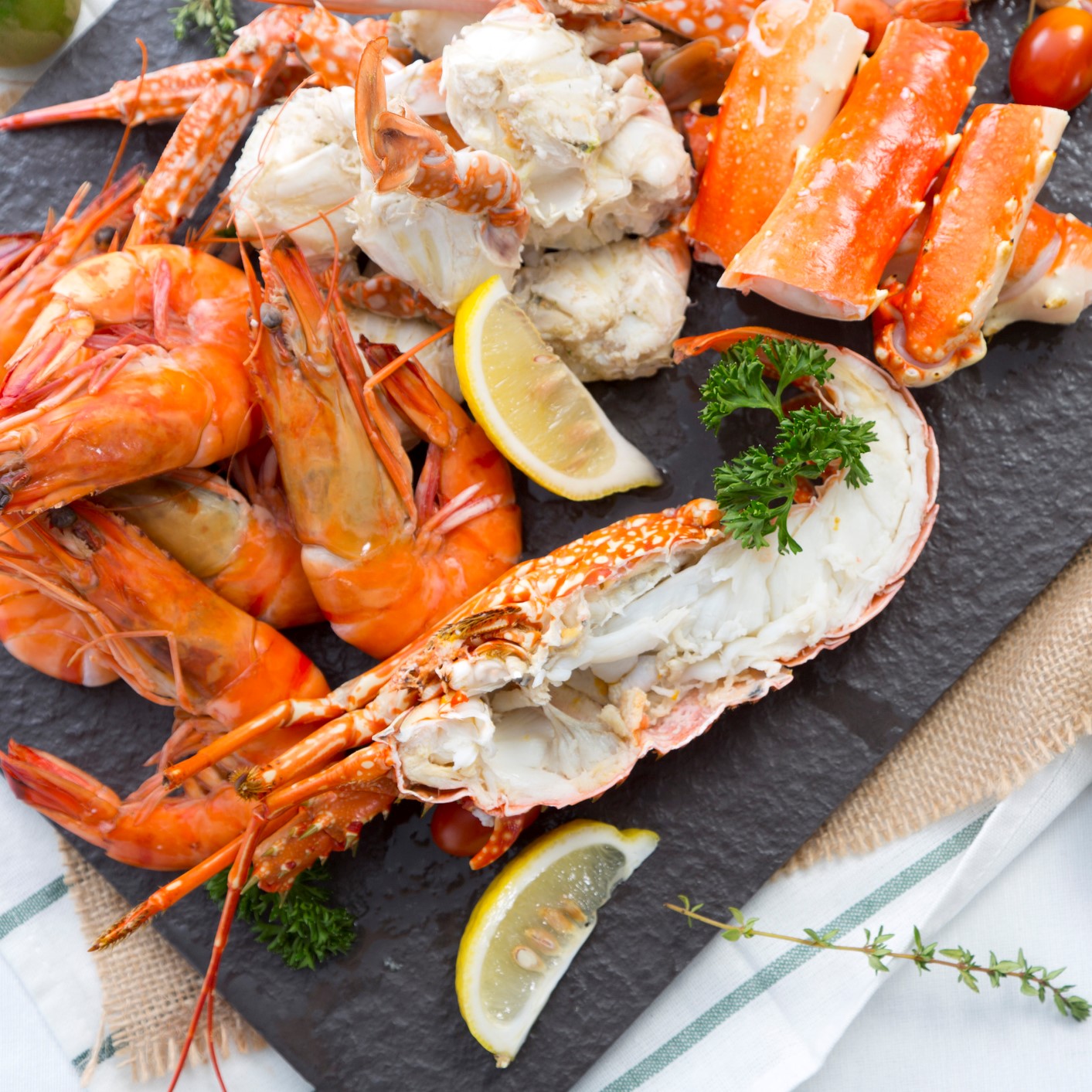- Crustaceans are aquatic animals that have jointed legs, a hard shell, and no backbone. Examples include crab, crayfish, lobster, prawns, and shrimp.
- Most molluscs have a hinged two-part shell and include clams, mussels, oysters, and scallops. It can also include various types of octopus, snail, and squid.
- Crustaceans and molluscs, sometimes collectively referred to as shellfish, are considered priority food allergens by Health Canada. Priority food allergens are the foods that cause the majority of allergic reactions.
- Fish (e.g., trout, salmon), crustaceans (e.g., lobster, shrimp), and molluscs (e.g., scallops, clams) are sometimes collectively referred to as seafood.
- Crustacean and mollusc allergies predominately affect adults and are less common among young children. These allergies tend to develop later in life than the common childhood allergies.
- Allergies to crustaceans and molluscs are usually lifelong.
- People who are allergic to one type of seafood, may not be allergic to other kinds of seafood. Many people are only allergic to a single type of seafood. For example, some people can eat fish safely, but have allergic reactions to crustaceans like lobster or crab.
- If you are allergic to one type of shellfish (like molluscs), consult your allergist before trying other types (like crustaceans).
Allergic reactions to crustaceans and molluscs
Individuals with crustacean or mollusc allergies can experience allergic reactions without eating these foods. On rare occasions, exposures to proteins in cooking vapours (such as steam from boiling lobsters) and on dishes used to present these foods (like sizzling woks or skillets) can cause an allergic reaction.
If you have an allergy to crustaceans and molluscs, keep an epinephrine auto-injector (e.g., EpiPen®, ALLERJECT®) with you at all times. Epinephrine is the first-line treatment for severe allergic reactions (anaphylaxis).
Be allergy-aware: How to avoid crustaceans and molluscs
- Read ingredient labels every time you buy or eat a product. If the label indicates that a product “Contains” or “may contain” crustaceans and/or molluscs, do not eat it. Health Canada notes the following:
- If crustacean or mollusc is part of the food, the specific species/type of crustacean or mollusc must be declared in the list of ingredients or in a separate “contains” statement. Crustacean and molluscs should be listed on the label of pre-packaged foods using their common names (e.g., lobster, crab, clam, oyster, etc.).
- The "may contain" label might contain the specific type of crustacean or mollusc (e.g. "may contain shrimp") or it could say "may contain crustaceans or molluscs".
- If you do not recognize an ingredient, if there is no ingredient list available, or if you don’t understand the language written on the packaging, avoid the product.
- Do The Triple Check and read the label:
- Once at the store before buying it.
- Once when you get home and put it away.
- Again before you serve or eat the product.
- Always carry your epinephrine auto-injector. It’s recommend that if you do not have your auto-injector with you, that you do not eat.
- Check with manufacturers directly if you are not sure if a product is safe for you.
- Be careful when buying products from abroad since labelling rules differ from country to country.
- Watch for cross-contamination, which is when a small amount of a food allergen (e.g., shrimp) gets into another food accidentally, or when it’s present in saliva, on a surface, or on an object. This small amount of an allergen could cause an allergic reaction.
- Learn how to read food labels
- Find out more about cross-contamination
- Check out these tips for dining out
Common names for crustaceans
- Crab
- Crayfish (crawfish, écrivisse)
- Lobster (langouste, langoustine, coral, tomalley)
- Prawns
- Shrimp (crevette)
Common names for molluscs
- Abalone
- Clam
- Cockle
- Conch
- Geoducks
- Limpets
- Mussels
- Octopus
- Oysters
- Periwinkle
- Quahaugs
- Scallops
- Snails (escargot)
- Squid (calamari)
- Whelks
Other examples of crustaceans and molluscs
- Ceviche
- Sashimi
- Scrod
- Surimi (used to make imitation crab and lobster meat)
- Sushi
Possible sources of crustaceans and molluscs
- Dips and spreads
- Combination foods such as fried rice, paella, spring rolls (from rolls or sauce)
- Fried foods (from contaminated frying oil)
- Garnishes, e.g. antipasto, caponata (Sicilian relish)
- Salad dressings
- Sauces, e.g. alle vongole, marinara, oyster sauce
- Soups
- Sushi
- Wine and beer (used as a fining agent)
Non-food sources of crustaceans and molluscs
- Lip balm/lip gloss
- Pet food and pet bedding
- Compost or fertilizers
Report a reaction
If you believe you may have reacted to an allergen not listed on the packaging, you can report it to the Canadian Food Inspection Agency, which may issue a product recall. Find out more on our Food Labelling page.

